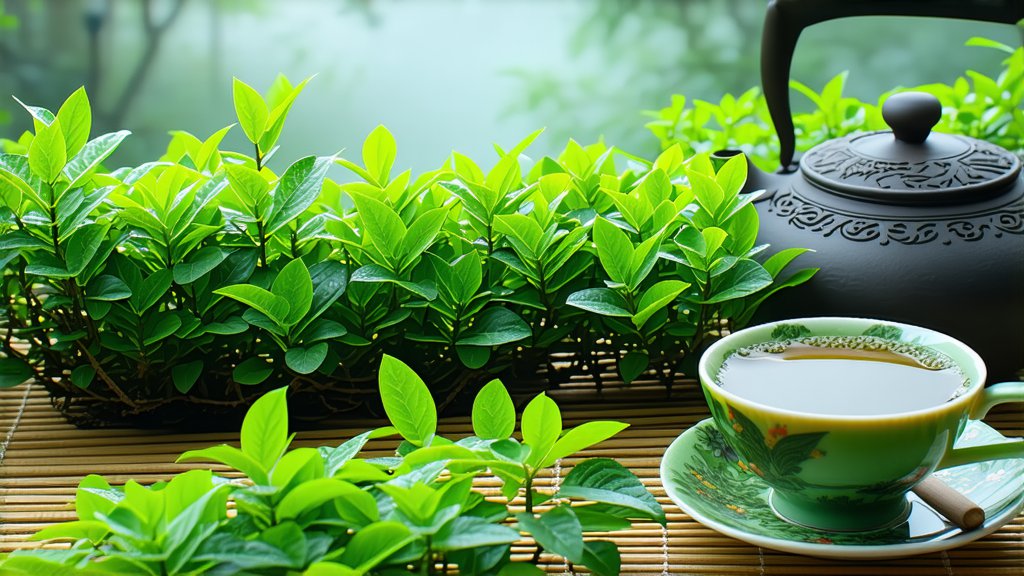
Longjing Tea, often referred to as Dragon Well Tea, is one of the most revered and iconic varieties of Chinese green tea. Originating from the picturesque region surrounding West Lake in Hangzhou, Zhejiang Province, this tea has captivated tea enthusiasts for centuries with its unique flavor profile, aromatic qualities, and elegant appearance.
Historical Background
The history of Longjing Tea dates back over a thousand years, with its cultivation and production techniques being refined during the Tang Dynasty (618-907 AD). The tea gained significant prominence during the Qing Dynasty when Emperor Kangxi was so impressed by its quality that he had four tea bushes planted in the imperial palace. These four bushes are still revered and protected today, symbolizing the long-standing tradition and cultural significance of Longjing Tea.
Varieties of Longjing Tea
There are several grades and sub-varieties of Longjing Tea, each distinguished by factors such as the time of harvest, the part of the tea plant used, and the skill level of the tea master. The primary grades include Xu Yue (Pre-rain), Yu Qian (Rain Before), Yuan Ming (Tomb-sweeping Day), Li Xia (Beginning of Summer), and Xiao Man (Grain Buds). Among these, Xu Yue Longjing is considered the finest, featuring tender leaves plucked before the annual rainy season begins.
Cultivation and Production
Longjing Tea is cultivated in the fertile soils around West Lake, benefitting from the region's mild climate and abundant rainfall. The tea plants are typically grown on terraced hillsides, allowing for optimal sunlight exposure and drainage. The meticulous cultivation process includes regular pruning, pest control, and organic fertilization to ensure the highest quality tea leaves.
The production of Longjing Tea involves several critical steps:
-
Plucking: Only the tender buds and top leaves are handpicked, usually in early spring. This ensures that the tea retains its delicate flavors and nutrients.
-
Withering: The freshly picked leaves are spread out in a thin layer to undergo natural withering, reducing moisture content and softening the leaves.
-
Fixation: This crucial step involves pan-frying the leaves at high temperatures to halt oxidation and preserve their green color. The leaves are constantly stirred to prevent burning and ensure even heating.
-
Shaping: After fixation, the leaves are shaped by hand or using specialized machinery to achieve the characteristic flat shape of Longjing Tea.
-
Drying: Finally, the shaped leaves are dried to remove any remaining moisture, resulting in the crisp, dry texture that is essential for proper storage and brewing.
Art of Brewing Longjing Tea
Brewing Longjing Tea is an art form that enhances the tea's delicate flavors and aromatic qualities. Here is a step-by-step guide to brewing the perfect cup of Longjing Tea:
-
Choose Quality Tea Leaves: Start with high-quality Longjing Tea leaves, preferably from a reputable source.
-
Prepare the Tea Ware: Use a transparent glass or a Yixing clay teapot to fully appreciate the tea's visual appeal and subtle nuances.
-
Preheat the Ware: Rinse the teapot and cups with hot water to warm them up and remove any impurities.
-
Measure the Leaves: Typically, use about 3 grams of loose leaves per 150 ml of water. Adjust according to personal preference.
-
Boil the Water: Use freshly drawn water and bring it to a boil. Let it cool slightly to around 80-85°C (176-185°F) before pouring over the leaves.
-
Steep the Tea: Pour the hot water over the leaves and let them steep for about 1-3 minutes. Avoid oversteeping to prevent bitterness.
-
Observe and Enjoy: Watch as the leaves unfurl gracefully in the water, releasing their vibrant color and aroma. Savor the first few sips to experience the full spectrum of flavors.
Flavor Profile and Aromatics
Longjing Tea is renowned for its smooth, mellow taste with a distinctive chestnut-like sweetness. The initial sip reveals a fresh, vegetal flavor followed by a lingering sweetness that coats the palate. The aroma is equally captivating, reminiscent of fresh grass and roasted nuts, providing a sensory journey that reflects the tea's pristine origins.
Health Benefits
Beyond its delightful taste and aroma, Longjing Tea offers numerous health benefits. Rich in antioxidants, catechins, and vitamins, it helps boost the immune system, improve metabolism, and reduce inflammation. Regular consumption of Longjing Tea is also associated with improved cardiovascular health, enhanced mental clarity, and stress reduction.
Cultural Significance
In Chinese culture, Longjing Tea holds a special place not only as a beverage but also as a symbol of elegance, tranquility. It is often served during important ceremonies, social gatherings, and meditative practices. The tea embodies the harmony between nature and human craftsmanship, reflecting the philosophy of balance and mindfulness that permeates Chinese traditions.
Conclusion
Longjing Tea is more than just a drink; it is a testament to the rich heritage and artistry of Chinese tea culture. From its ancient origins to its modern-day popularity, Longjing Tea continues to enchant tea lovers around the world with its exquisite flavor, aromatic allure, and profound cultural significance. Whether you are a seasoned tea connoisseur or a curious newcomer, savoring a cup of Longjing Tea is sure to be a memorable and enriching experience.